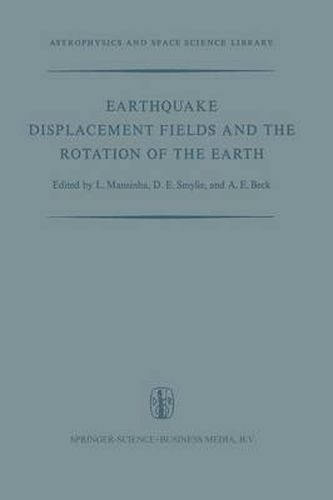Readings Newsletter
Become a Readings Member to make your shopping experience even easier.
Sign in or sign up for free!
You’re not far away from qualifying for FREE standard shipping within Australia
You’ve qualified for FREE standard shipping within Australia
The cart is loading…






This title is printed to order. This book may have been self-published. If so, we cannot guarantee the quality of the content. In the main most books will have gone through the editing process however some may not. We therefore suggest that you be aware of this before ordering this book. If in doubt check either the author or publisher’s details as we are unable to accept any returns unless they are faulty. Please contact us if you have any questions.
The seeds of this conference were sown with the publication by Press, in 1965, of a paper in which he suggested that the displacement field due to a major earthquake may extend over much greater distances than had been thought possible before. Later on, Mansinha and Smylie pointed out that if Press was correct then, since the redistri bution of significant quantities of mass was involved, the inertia tensor of the earth would be altered and thus cause the earth to wobble; this revived the idea that earth quakes might be the long sought source for maintaining the Chandler Wobble. They argued that since earthquakes are sudden events it should be worthwhile trying to determine if there was any correlation between sudden changes in the Chandler term of the pole path and major earthquakes. Furthermore, since displacements occur both before and after an earthquake it might be possible to obtain a few days warning of a major earthquake by making instantaneous observations of the pole path. Analysis of the data indicated some correlation but, as often happens in science in general and in geophysics in particular, the results were not conclusive because of imperfect theory and the need for more accurate determinations of the pole position. It soon became clear that a meeting between geophysicists and astronomers involved in this type of work would be of mutual benefit.
$9.00 standard shipping within Australia
FREE standard shipping within Australia for orders over $100.00
Express & International shipping calculated at checkout
This title is printed to order. This book may have been self-published. If so, we cannot guarantee the quality of the content. In the main most books will have gone through the editing process however some may not. We therefore suggest that you be aware of this before ordering this book. If in doubt check either the author or publisher’s details as we are unable to accept any returns unless they are faulty. Please contact us if you have any questions.
The seeds of this conference were sown with the publication by Press, in 1965, of a paper in which he suggested that the displacement field due to a major earthquake may extend over much greater distances than had been thought possible before. Later on, Mansinha and Smylie pointed out that if Press was correct then, since the redistri bution of significant quantities of mass was involved, the inertia tensor of the earth would be altered and thus cause the earth to wobble; this revived the idea that earth quakes might be the long sought source for maintaining the Chandler Wobble. They argued that since earthquakes are sudden events it should be worthwhile trying to determine if there was any correlation between sudden changes in the Chandler term of the pole path and major earthquakes. Furthermore, since displacements occur both before and after an earthquake it might be possible to obtain a few days warning of a major earthquake by making instantaneous observations of the pole path. Analysis of the data indicated some correlation but, as often happens in science in general and in geophysics in particular, the results were not conclusive because of imperfect theory and the need for more accurate determinations of the pole position. It soon became clear that a meeting between geophysicists and astronomers involved in this type of work would be of mutual benefit.